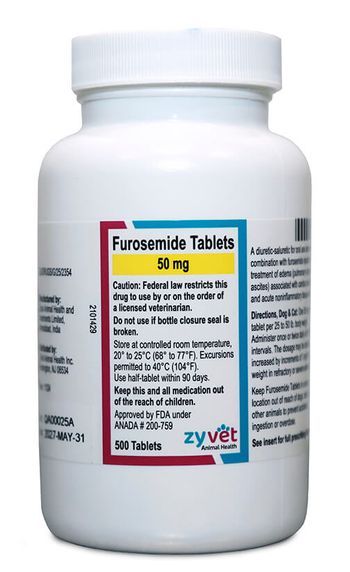
The sneeze and snot of feline nasal disease (Proceedings)
The goal of this presentation is to simply the diagnostic approach and treatment of nasal disease in the feline patient.
The goal of this presentation is to simply the diagnostic approach and treatment of nasal disease in the feline patient.
Case studies will be utilized in this presentation.
Characterize the nasal disease
Unilateral or bilateral
Type of discharge - serous, mucoid, mucopurulent, hemorrhagic
Duration of disease – acute or chronic
Response to previous therapy
Consider disease rule-outs
Dental disease/ tooth root abscess
Cats – most common tooth affected is the canine tooth
Foreign object (grass, needle, other)
Rhinitis/sinusitis
Nasopharyngeal polyp
Granulomas
Nasal/Sinus Infection
Bacterial – primary pathogens such as Mycoplasma, Chlamydia psittaci, Bordatella bronchiseptica
Bacterial – secondary bacterial overgrowth (not the primary problem)
Viral – Feline herpes virus 1, Calicivirus
Fungal – Cryptococcus neoformans, Aspergillus spp.
Parasitic – nasal mites
Pneumonia
Neoplasia squamous cell carcinoma, adenocarcinoma, lymphoma, fibrosarcoma, osteosarcoma, chondrosarcoma, other
Dysphagia, vomiting, regurgitation
Congenital/ palate defects
Trauma
Coagulopathy, platelet disorder
Systemic hypertension
Vasculitis
Perform a complete physical exam, paying particular attention to
Checking teeth/ thorough oral exam (hard and soft palate)
Checking ear canals
Ophthalmic exam/retropulsion of globes
Checking patency of nasolacrimal ducts (fluorescein stain)
Glass slide test to assess nasal airflow (visualize steam on glass slide)
Start diagnostic testing (progress from least invasive to more invasive procedures)
Obtain minimum database – CBC, biochemistry profile, urinalysis, feline viral tests, blood pressure measurement, chest radiographs
If discharge is primarily hemorrhagic – blood pressure measurement, coagulation tests (prothrombin time (PT), activated partial thromboplastin time (PTT), or activated clotting time (ACT), platelet count
Nasal cytology - low yield but may help identify fungal infections
Viral detection tests – PCR, direct fluorescent antibody staining, virus isolation by culture; document presence of virus; low value for proving disease as many healthy cats are positive
Laryngeal function exam
Imaging (Skull radiographs, CT scan) under general anesthesia = Road Map
Nasal flush - may help remove foreign objects like grass
Nasal culture - helps identify secondary bacterial infections, may occasionally isolate fungal infection; culture of deep tissue obtained by biopsy more useful.
Nasal biopsy – rhinoscopy allows visualization of lesion(s) and biopsies of the affected areas; biopsies may also be obtained without rhinoscopy
Initiate therapy based on findings:
Antibiotics
Doxycycline: 5 mg/kg every 12 hours, give with food
Clindamycin: 11 mg/kg every 12 hours
Azithromycin: 5-10 mg/kg every 24 hours for 3-5 days, then every 72 hours
Azithromycin - Alternate protocol: 5-15 mg/kg every 12 -24 hours for 10 days
Enrofloxacin or other fluoroquinolone: 2.5-5 mg/kg every 12-24 hours
Amoxicillin-clavulanate: 11-22 mg/kg every 12 hours
Antivirals
L-lysine: 250 - 500 mg every 12 hours
Interferon alpha: 25 -30 units/day orally; 10,000-20,000 U/kg/day SQ
Anti-inflammatory agents
Piroxicam: 1 mg/cat/day, give with food.
Corticosteriods -Prednisolone 1 mg/kg every 12-24 hours
Antihistamines
Cyproheptadine (Periactin) 2 mg every 12-24 hours
Diphenhydramine (Benadryl) 1-2 mg/kg every 12 hours
Amitriptyline (Elavil) 5-10 mg/cat every 12-24 hours
Chlorpheniramine (Claritin) 2-4 mg/cat every 12-24 hours
Cetirizine (Zyrtec) 5 mg/cat every 12-24 hours
Antifungal medication
Ketoconazole: 10 mg/kg once daily
Itraconazole: 5 mg/kg every 12 hours for 4 days; then 5 mg/kg every 24 hours
Fluconazole: 50 mg/cat every 12 -24 hours for 8 weeks or 4 weeks past measurable disease
Intranasal vaccine (Herpes/Calici)
Initial administration, booster in 2-4 weeks, booster every 3-6 months depending on severity of the disease
Topical treatments
Saline flushes
Topical decongestants
Topical glucocorticoids
Topical antibiotics
Airway humidification
Chemotherapy
Radiation therapy
Surgery
Selected readings
Boothe DM: Principles of drug selection for respiratory infections in cats. Comp Cont Educ Pract Vet 19:5-15, 1997.
Gaskell R, Dawson S: Feline respiratory disease. In Greene CE (ed): Infectious Diseases of the Dog and Cat, 2nd ed. Philadelphia, W.B. Saunders, 1998, pp 97-106.
Greene CE: Respiratory infections. In Greene CE (ed): Infectious Diseases of the Dog and Cat, 2nd ed. Philadelphia, W.B. Saunders, 1998, pp 582-594.
Hahn KA, Anderson TE: Tumors of the respiratory tract. In Bonagura JD (ed): Kirk's Current Veterinary Therapy XIII. Philadelphia, W.B. Saunders, 2000, pp 500-505.
Henderson SM, Bradley K, Day MJ, et al: Investigation of nasal disease in the cat – a retrospective study of 77 cases. J Feline Med Surg 6:245-247, 2004.
Hunt GB, Perkins MC, Foster SF, et al: Nasopharyngeal disorders of dogs and cats: a review and retrospective study. Comp Cont Educ Pract Vet 24:184-200, 2002.
Maggs DJ, Lappin MR, Reif JS, et al: Evaluation of serologic and viral detection methods for diagnosing feline herpesvirus-1 infection in cats with acute respiratory tract or chronic ocular disease. J Am Vet Med Assoc 214:4 502-507, 1999.
Maggs DJ, Naisse MP: Effects of oral L-lysine supplementation on the ocular shedding rate of feline herpesvirus (FHV-1) in cats. Proceedings of the 28th Annual Meeting of the American College of Veterinary Ophthalmology, Santa Fe, NM, November, 1997, p 101.
Michiels L, Day MJ, Snap F, et al: A retrospective study of non-specific rhinitis in 22 cats and the value of nasal cytology and histopathology. J Feline Med Surg 5:279-285, 2003.
Sykes JE, Anderson GA, Studdert VP, et al: Prevalence of feline Chlamydia psittaci and feline herpesvirus 1 in cats with upper respiratory tract disease. J Vet Intern Med 13:153-162, 1999.
Newsletter
From exam room tips to practice management insights, get trusted veterinary news delivered straight to your inbox—subscribe to dvm360.






